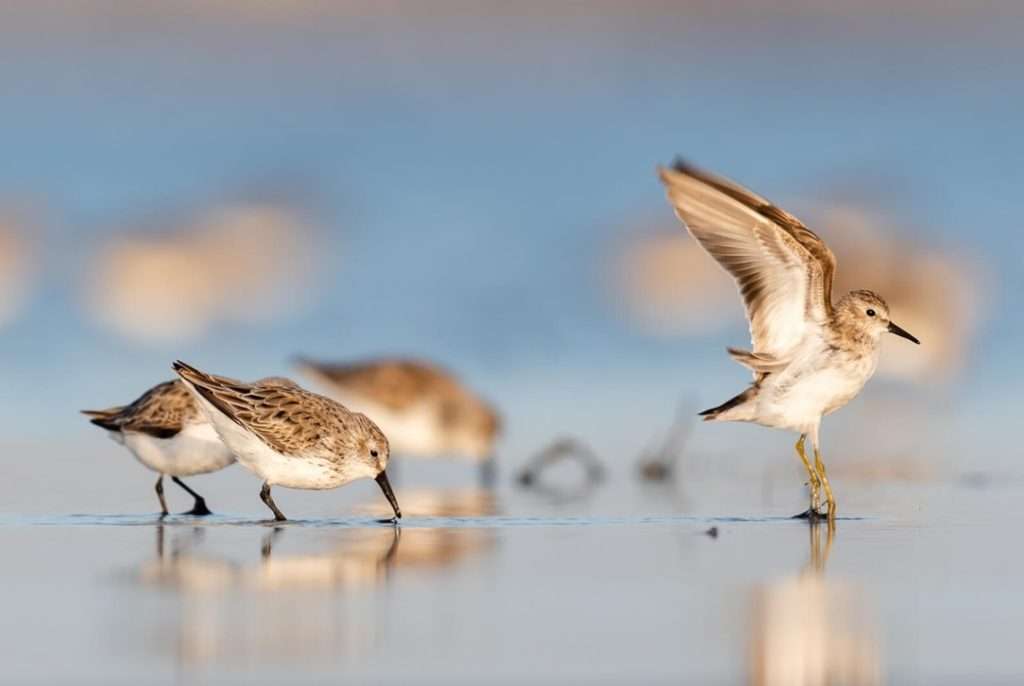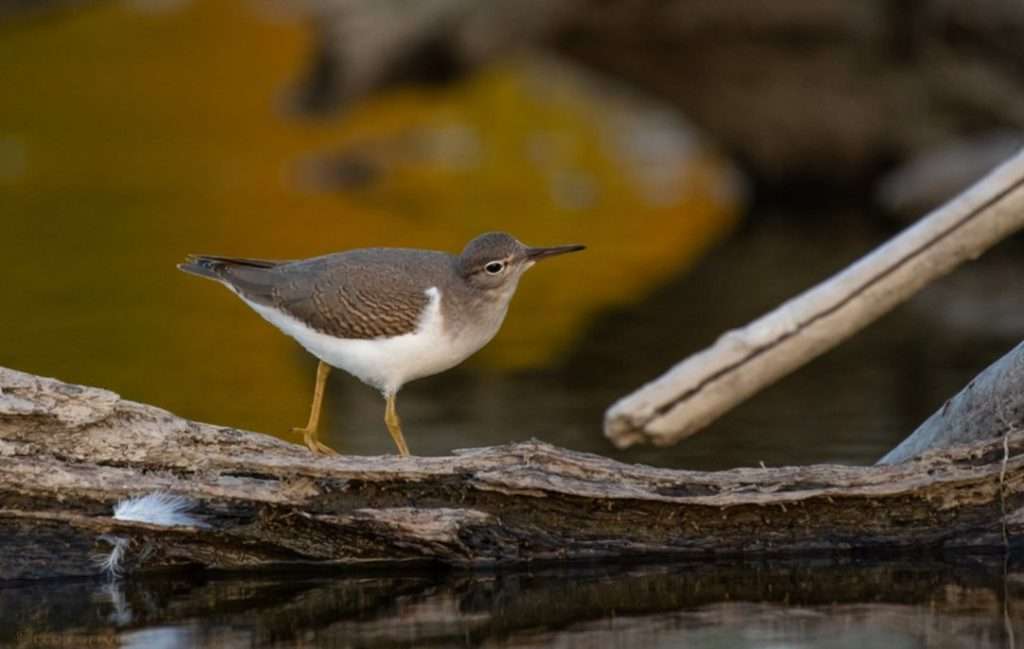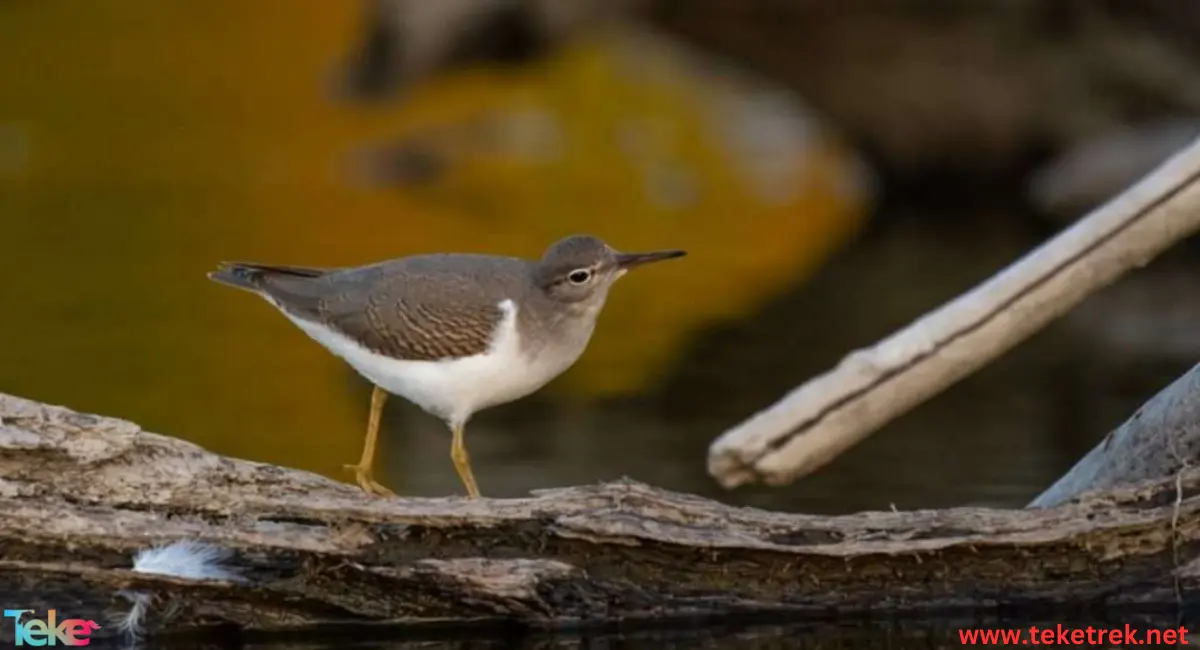Sandpipers are distinguished birds in terms of appearance, actions, and social life. Below we talk on TekeTrek more about how it lives, reproduces and feeds, and we list the most important facts about this distinctive bird.

An introduction to the sandpiper
The solitary sandpiper (Tringa solitaria) breeds in North America and spends its winter in South America, nesting in old bird nests in trees.
Description of sandpiper
The sandpiper is a shorebird belonging to the Scolopacidae family, Charadriiformes order.
- The length of the sandpiper ranges from 15 to 30 cm (6 to 12 in).
- Sandpiper Popular for its richly spotted breeding plumage, swaying gait, stuttering wingbeats, and showy courtship dances, this bird is among the shorebirds.
- Sandpipers have long, narrow beaks, legs and wings, and short tails.
- The sandpiper has a pattern of brown, orange, and black on the upperparts, with white or cream underneath. Its color is paler in the fall than in the spring.
- Sandpipers are similar to each other, but some have specific features such as spotted breasts, white rump bands, or contrasting throat spots.
Sandpiper habitats
- Sandpipers are found in North America, on the beach or in pairs along the shores of lakes, rivers, and streams.
- Sandpipers nest in the Arctic and sub-Arctic regions and then move to their breeding sites across the northern temperate zone in large flocks.
- The sandpiper nests on the ground in the open in a small, sparsely lined hollow.
- You can observe a bird’s wingbeats in flight or look for them as they swing on rocky banks or tree trunks.

Sandpiper species
The genus Calidris contains several birds called sandpipers, including:
- The 15 cm long Lesser Sandpiper (C. minutilla), sometimes called the “American Mission”, is found in Alaska and across the Canadian Arctic to Nova Scotia. It spends the winter on the coasts extending from Oregon and North Carolina to South America.
- The Purple Sandpiper (C. maritima) breeds in misty Arctic highlands, particularly in eastern North America and northern Europe, and overwinters as far north as Greenland and Great Britain. Its color is gray, and its legs and beak are yellow.
- The red-necked sandpiper (C. ruficollis) also breeds in Siberia, spending the winter as far south as New Zealand and Tasmania.
- White-rumped Sandpiper (C. fuscicollis) breeds in the Arctic of North America and winters in southern South America. During the breeding period, its color is grey.
- The Upland Sandpiper (Bartramia longicauda), also known as the Upland Plover, is an American bird of open fields. A slender, gray-striped bird, 30 cm long, that eats insects, including grasshoppers.
- The sea otter (Enhydra lutris), a rarity found in the North Pacific Ocean, is found in kelp beds.
- Most of these species were classified among the genera Erolia, Ereunetes, and Crosethia, and are today placed in the genus Calidris.
Food for sandpipers
Sandpipers feed on insects, worms, and crustaceans on beaches and mudflats of ocean coasts and inland waters, and they run near water.
Reproduction in sandpipers
The sandpiper breeds on the grassy shores of lakes and rivers in Eurasia and moves in the winter from Africa to Australia and Polynesia.
- The trout breeds near streams and ponds in subarctic and temperate regions of North America and migrates to southern Argentina in winter.
- Sometimes the female practices a reproductive strategy called polyandry, in which she mates with four males, with each male caring for a clutch of eggs.
- The female arrives at the breeding area before the male, prepares it, and defends it.
- While the male’s role is mainly to care for the parents, incubate the eggs, and take care of the young.
- One female lays about four eggs from several males at the same time.
- Male sandpipers have 10 times the testosterone of females, but during the reproductive period, females experience a seven-fold increase in hormone levels due to their aggression and a general role reversal between male and female.
- The female stores sperm for a month, and the eggs she lays from another male may be the result of a previous mating.
Interesting facts about sandpiper
Among the most prominent facts about the sandpiper:
- The sandpiper is characterized by its swaying movements, including the peep sway, the bob sway, the bird twitch or perk, the snipe sway, and the tail tip.
- Chicks flop immediately after hatching, and flop becomes faster when the bird is stressed, while stopping when disturbed, aggressive, or courting.
- The oldest sandpiper was 12 years old and was a male.
- The sandpiper emits loud cries while flying or running on the sand.


FAQ
The most common questions about the sandpiper:
- What is the affiliation of the sandpiper?
It belongs to the family Scatophagidae, order Charadriiformes.
- How tall is the sandpiper?
It ranges from 15 to 30 cm (6 to 12 inches).
- Where do sandpipers live?
You find sandpipers in North America, and you also find sandpiper pairs on the beach or the shores of lakes, rivers, and streams.
- How do sandpipers reproduce?
The sandpiper reproduces by eggs.
- Where do sandpipers breed?
On the grassy shores of lakes and rivers in Eurasia, it then moves during the winter from Africa to Australia and Polynesia.
- What are the types of sandpipers?
Red-necked Sandpiper (C. maritima), White-rumped Sandpiper (C. maritima), Purple Sandpiper (C. maritima), Upland Sandpiper (Bartramia longicauda), Sea Otter (Enhydra lutris).
- How rare are sandpipers?
Records indicate that the cat is a common species of bird, found over a large area in sandy areas and shallow waters around the world.
- What is a sandpiper also known as?
This type of bird is also known by names such as “plover” and “snipe”.
- What is special about sandpipers?
It is distinguished by its ability to fly
It also has a long, slender, elongated beak This is about searching for food in the sand.
- How rare are sandpipers?
Records indicate that the cat is a common type of bird, as it is found over a large area in sandy areas and shallow waters around the world.
- What is a sandpiper also known as?
This type of bird is also known by names such as “plover” and “snipe”.
Its elegance and elegance also have a long, slender beak that helps it search for food in the sand.


In short, the sandpiper is a marine carnivorous animal that reproduces by laying eggs. It is characterized by a role reversal between the male and female during the reproductive period, as the male assumes responsibility for caring for the children.
Sources






